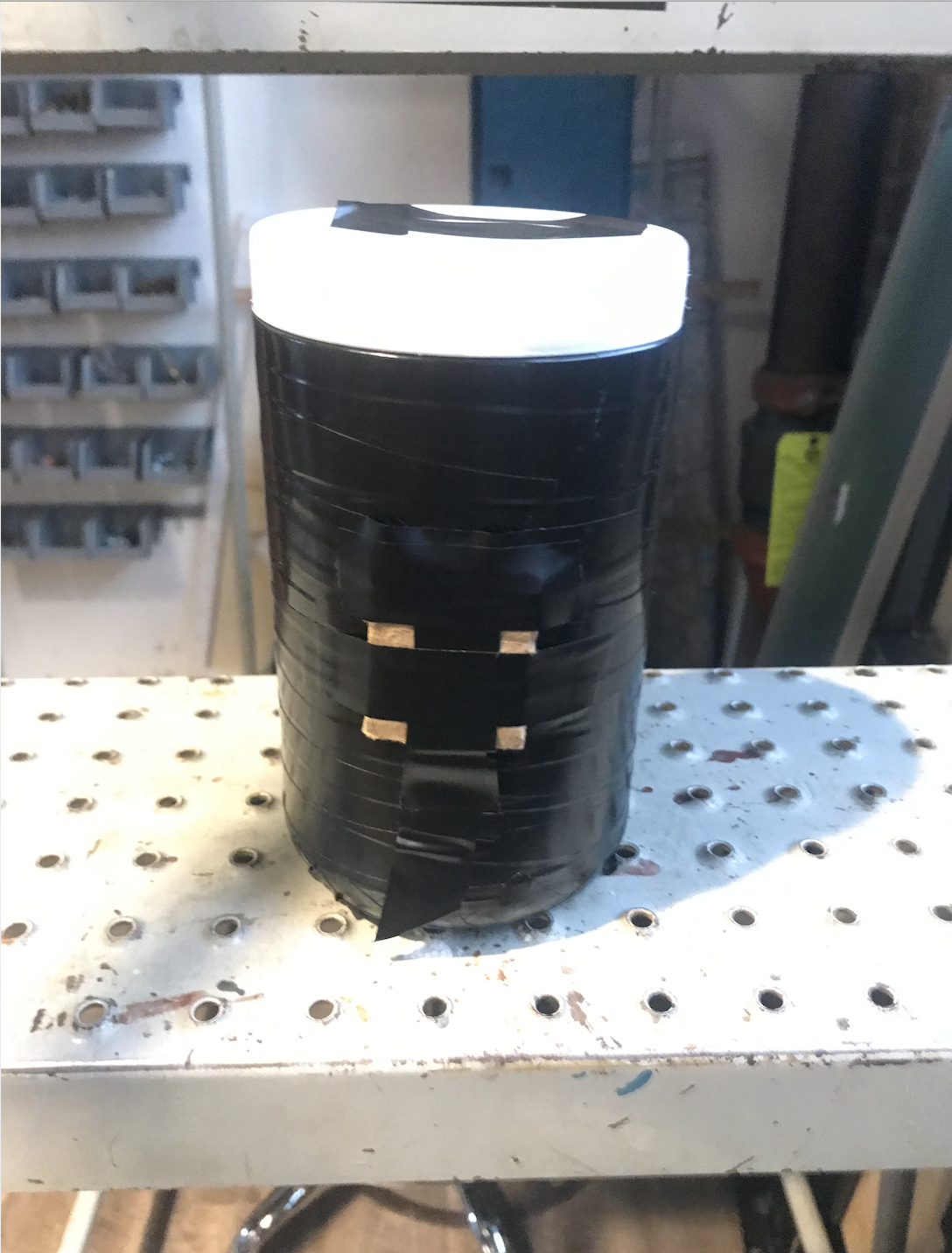In this course called Light, Sound, and Time we examined more about light and how it works. We learned different concepts and functions about why light does what it does and how it does it. While breaking down this concept we learned new vocabulary words and spent some time learning about the electromagnetic spectrum. We also learned a lot about the eye and how that correlates to the light and the effective ways light helps the eye to collect information. Another topic we went over was how light has great importance when using any type of camera and how a camera is very similar to the eye and its functions. For this action project, we were able to make our own pinhole cameras. By doing this we were able to really get to see how light works and controls the exposure of the camera on an image. Since we made pinhole cameras we got to take some photos and then go to Harry Truman S. College to get them developed, so we got to see the interesting process of getting our photos developed.
 |
| SR.PinholeCamera.2020 |
When creating the pinhole cameras we had to make sure that the container was completely light proof so that there was no light getting in. The reason why we had to make sure that the inside of the container was completely black is to prevent the light-sensitive paper from getting exposed to the light because if it did it would ruin the image. Another thing we had to create was the pinhole, which is super important because it allows the light to come into the camera similar to the pupil in our eyes. The last thing we had to create was our shutter. Our shutter is like our eyelids. It’s that part that actually opens to allow the light to come in the camera. For our pinhole cameras we kept ours open for two-five minutes. As we created out pinhole cameras we referred back to what we learned back in class to have a successful finish such as, refraction and reflection. Refraction is when light waves change in a different direction and reflection is when they bounce off an object. When creating my camera I don't think it demonstrates neither refraction or reflection. There isn't a obvious and consistent method that was being portrayed. There is no light bouncing off of the camera. Another concept that was used through this process was light waves and particles. Light is made up of both waves and particles that pass through each other or bounce off a surface or object. The reason is that light behaves like a particle and a wave. When taking my photos light waves and particles were being used to make out the image in the photo.
When I was capturing my first image I had to measure the distance of the object I was trying to capture since with a pinhole camera there isn’t exactly a viewfinder to look through. First I measured the height of the pinhole to the base of the container/camera then I measured the width of my camera and lastly measured the height of the object I was taking a picture of. The height of my object was 8.25 inches, the width of my camera was 3.5 inches, and the distance of the pinhole to the base was 3 inches. To find the distance I should place my object from my camera I first multiplied 8.25 inches and 3.5 inches and divided that by 3, which then gave me 9.62, and I subtracted that by 3.5 which gave me the answer, 6.12 inches and that’s how far I placed my object away from my camera.
 |
| SR.Measurements.2020 |
Throughout my process of taking pictures, I consistently left the shutter open for five minutes. I noticed that when developing the photos there was a lot of exposure on some of them. There were some revealing spots where you can see the photo, but it wasn't exactly a clear shot. The first time it looked a bit more revealing and then for the second shot it was totally too overexposed. As my third attempt, I figured that there was just too much exposure in the images, so instead of five minutes, I left the shutter open for two minutes. With this test, it sort of worked. It was a bit more visible but still was a little overexposed. Next time when I create another pinhole camera I think making sure that the camera is completely light proof is key and also making the actual pin much smaller. By making it smaller it will let in less amount of light, which wouldn’t leave the photos so dark.
 |
| SR.Photos.2020 |
Overall, this class was super exciting. It was interesting to learn and see how light is used and created. I had low hopes about this class because I didn't think it was going to be as interesting as it was. I really enjoyed how we correlated the course with how a camera works to gain a different perspective and method that we use with light. I thought it was really nice how we used photography, specifically film photography to wrap our heads around the concept of light and to also learn the process of film photography. By making a pinhole camera it showed me that it's super easy to make your own camera and use light in a new way.



Comments
Post a Comment